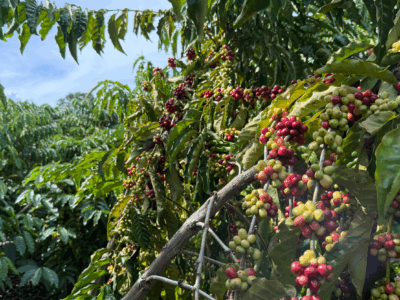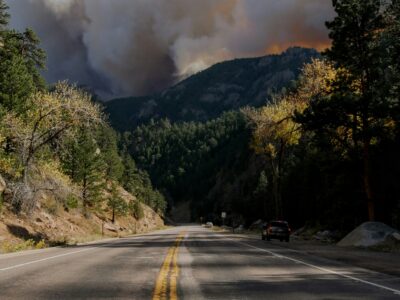The Fires in Los Angeles
Wildfire policy and the tragic fires in Southern California?
National attention is (rightly) focused on the terrible fire situation in Los Angeles. At the moment, the top priority is supporting first responders who are trying to control the fires, prevent more damage, and help the people who have lost homes and loved ones.
There is (of course) a bunch of chatter on social media about what might have prevented the fires or “fix” the wildfire crisis in the US more broadly. Some of that commentary has been helpful, some…. less helpful. I have a series of blog posts coming out soon, reflecting on the most recent effort in the last Congress to accelerate forest management on federal lands. But here I want to just respond to some of the social media discourse.
First, if you want a quick response to the most obviously inaccurate statements being made, this post is a good one. Here I’ll provide some more detailed responses to what I think are the most policy relevant and important points. Basically, I’ve seen two questions raised, one of which results from confusing different types of ecosystems across different locations, and the other results from perceptions of what policy is today based on the policy from a few years ago.
Would more prescribed burns and removal of vegetation have prevented the fires?
This is a point that has come up a lot. The answer is – probably not. It might have made the fires less serious, or less explosive. But if you have dry winds with 100 MPH gusts on a landscape that hasn’t had significant rainfall in eight months, you will have fires that spread fast.
That doesn’t mean prescribed burns and reduction in vegetation isn’t really important for fire risk reduction in general. It’s just that it depends on the location and the ecosystem. For instance, lots of thinning and burning helped manage fuel loads in a way that stopped a fire from burning into South Lake Tahoe a few years ago. But those are very different landscapes – conifer forests in the Sierra Nevada, where fire historically was mostly low-intensity and didn’t get into the crowns of trees very often. In southern California, a lot of the landscape is chapparal, and when chapparal burns, it burns very hot, very fast, and consumes much of the vegetation. Indeed, that is generally how chapparal has evolved with fire in southern California, and it is no surprise that in a location with periodic, seasonal high winds during extremely dry periods, you would get ecosystems like chapparal brush.
So in the Sierra Nevada, you can do prescribed burns, remove smaller trees and brush, and subsequent fires will likely burn at low intensity, and thus are much more manageable. That option isn’t available in southern California chapparal – unless you’re going to eliminate the chapparal entirely. Which would be a massive, expensive undertaking, and create other problems (such as much higher risks of soil erosion and landslides, and cause widespread ecological damage). In fact, our primary problem with chapparal in southern California is that we have too many ignitions, ignitions mostly caused by human activity, which cause burning to occur more frequently than it otherwise would. That in turn is displacing chapparal with non-native plants that are even more susceptible to fire – and indeed, chapparal removal might make that problem even worse.
There are still lots of contexts where prescribed burns and vegetation reduction do make sense in southern California. There are other ecosystems besides chapparal – such as the conifer forests in the mountains above Los Angeles – where those tools are very useful, because the ecosystems are different. And it generally makes sense to control the vegetation close to structures – what is often called defensible space – to reduce the possibility that fire will ignite structures. Targeted grazing to remove invasive grasses that can be a driver of initial fire starts is helpful too. But that’s a very different policy and legal problem than large-scale, landscape level management of vegetation or fire risk.
Is federal and California law preventing the amount of prescribed burns or vegetation management we need from occurring?
Here the answer is perhaps – but the trend line is positive, and the answer is very different today than it was a few years ago, at least at the state level.
The basic criticism is that environmental laws – most importantly, the California Environmental Quality Act (CEQA) and the National Environmental Policy Act (NEPA) – are getting in the way of private and public actors from doing the land management that is required to reduce fire risk. And there is certainly some truth to this. I’ll get into those points in more detail in some posts soon.
But it’s also true that the policy situation has been changing rapidly. This report (at page 13) notes that in 2017-18, California and the federal government conducted about 80,000 acres of prescribed burns in the state. The totals from 2023 are three times higher, with about 250,000 acres treated with prescribed burns. More broadly, the state treated over one million acres of land for fire risk in 2023, an increase of 25% in terms of total treatment acreage from 2021. And most of that increase came from state agencies increasing their activity. There are lots of reasons for those increases, but one of them has been a concerted effort by the state to reduce legal and regulatory barriers to fire risk reduction. Some of those have been statutory, including changes to California’s Forest Practices Act through SB 901 in 2018. Others have been regulatory, such as a state program to make it much easier to get CEQA reviews completed for fire management projects, a program I’ll discuss more in later posts.
Of course, we probably should be doing even more treatment, at a larger scale. But the trendlines at the state level are in the right direction. (The federal level is a different story, one that I’ll tackle in subsequent posts.
The takeaway from all of this is not the most uplifting. There are no easy answers to fire risk in southern California, nor any clear villains. Defensible space implementation, building houses that are more fire resilient, efforts to reduce ignitions in the areas around developed areas, quick and strong fire response (which includes making firefighting more plausible as a long-term career, a long-standing problem), are probably the most promising approaches right now – but those don’t really lend themselves to rants on the website formerly known as Twitter… (For a good thread on possible solutions that I generally agree with, see here…)
Reader Comments
2 Replies to “The Fires in Los Angeles”
Comments are closed.






Barbra Streisand: Winds Pushing Los Angeles Wildfires Are ‘Due to Climate Change’:
“….Streisand is not the only member of the Hollywood elite to bizarrely claim that the deadly Los Angeles wildfires has something to do with “climate change.”
As Breitbart News reported, Hollywood director Jim Jarmusch blamed the raging fires on “climate deniers,” demanding that people “wake the f*ck up” and stop viewing “woke” as “a negative thing.”
“This climate crisis is brought to you by climate deniers and venal corporate greed,” Jarmusch declared on Wednesday night, adding, “We’re in a period where these clowns are telling that woke is a negative thing, and I would just like to say it’s time we wake the f*ck up…..”
https://www.breitbart.com/entertainment/2025/01/10/barbra-streisand-winds-pushing-los-angeles-wildfires-are-due-to-climate-change/
“Global warming is driving increasingly dramatic swings between wet and dry periods all around the world. The Los Angeles fires, at least in part, are a product of this sort of “hydroclimate whiplash.” In 2023 and 2024, the city experienced unusually wet winters, which spurred the growth of grasses and shrubs.” https://e360.yale.edu/features/daniel-swain-